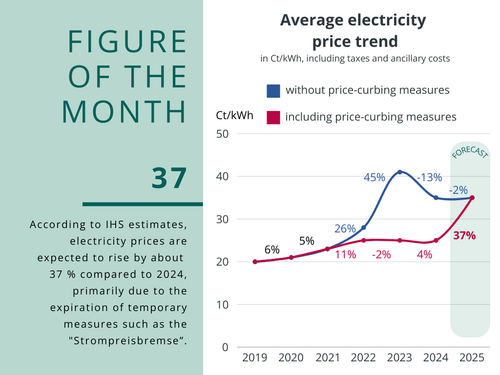Figure of the month: 37

The chart below illustrates the trajectory of electricity prices—including taxes, levies, and grid costs—comparing scenarios with and without key price interventions. In the short term, these measures provided tangible relief for households and helped moderate the inflation rate. However, temporary price cuts only have a limited impact. Once these measures expire, electricity prices are expected to surge in January 2025. Current IHS forecasts predict a 37% increase in electricity costs next year, which will likely add about one percentage point to the inflation rate.
In summary, the price interventions eased the burden on households and reduced inflation during the peak of the crisis. However, their expiration brings a rebound in both electricity prices and inflation. Moreover, the long-term-impact of these measures cannot be ignored: the financial resources allocated to support households are contributing to the current deficit, which fuels the ongoing debate over public debt.
You want to receive our monthly news via mail?

